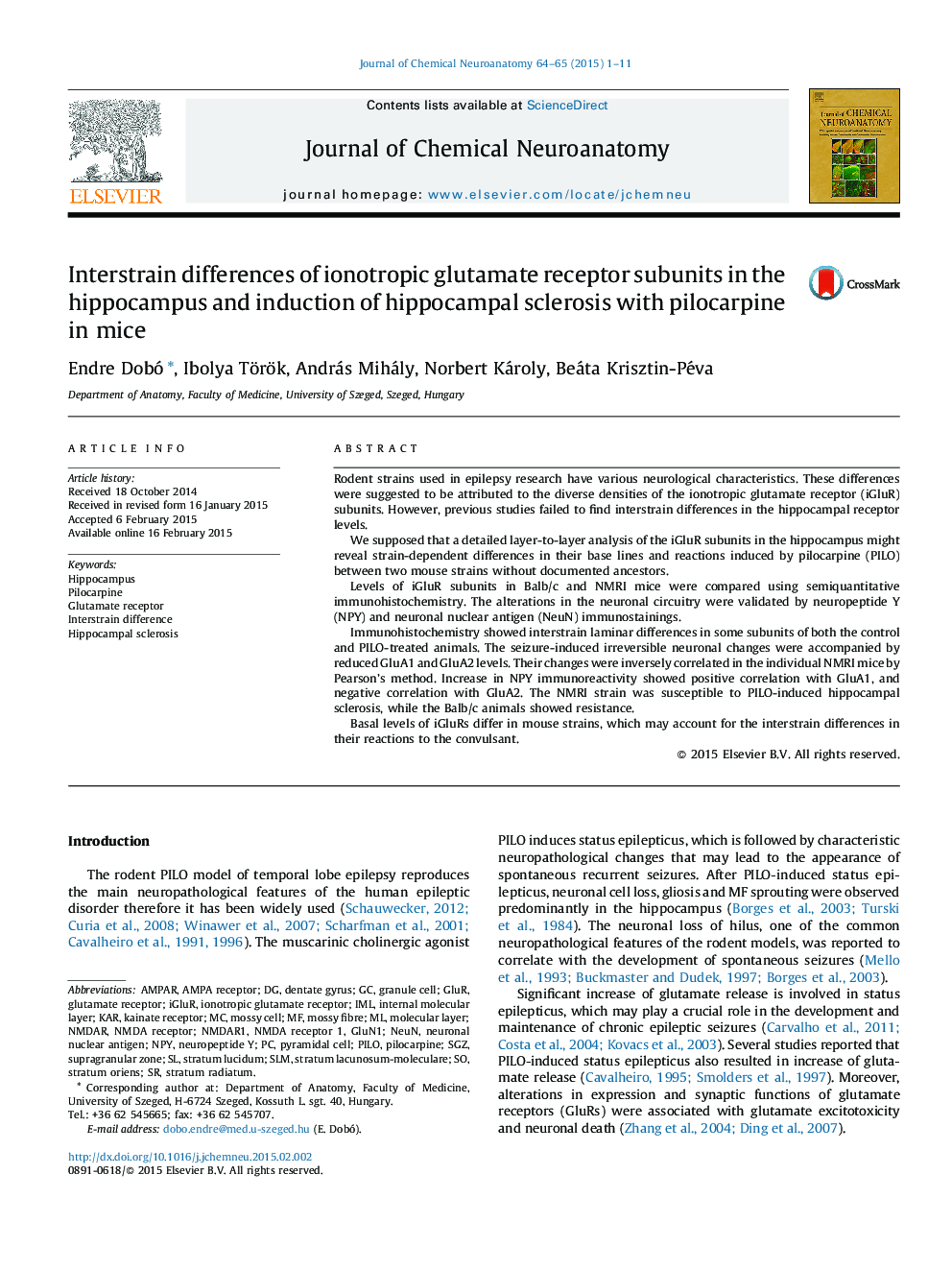| Article ID | Journal | Published Year | Pages | File Type |
|---|---|---|---|---|
| 1988827 | Journal of Chemical Neuroanatomy | 2015 | 11 Pages |
•Interstrain differences were found in the levels of ionotropic glutamate receptor subunits of mice.•The pilocarpine-induced seizures resulted in strain-dependent changes in the distribution of the ionotropic glutamate receptor subunits in the hippocampus.•The seizures reduced the GluA1 and GluA2 densities, the alterations of which in the dentate gyrus were adversely correlated in the individual mice.•The PILO treatment caused sclerotic hippocampi in the NMRI mice, while the Balb/c animals resisted to sclerosis.
Rodent strains used in epilepsy research have various neurological characteristics. These differences were suggested to be attributed to the diverse densities of the ionotropic glutamate receptor (iGluR) subunits. However, previous studies failed to find interstrain differences in the hippocampal receptor levels.We supposed that a detailed layer-to-layer analysis of the iGluR subunits in the hippocampus might reveal strain-dependent differences in their base lines and reactions induced by pilocarpine (PILO) between two mouse strains without documented ancestors.Levels of iGluR subunits in Balb/c and NMRI mice were compared using semiquantitative immunohistochemistry. The alterations in the neuronal circuitry were validated by neuropeptide Y (NPY) and neuronal nuclear antigen (NeuN) immunostainings.Immunohistochemistry showed interstrain laminar differences in some subunits of both the control and PILO-treated animals. The seizure-induced irreversible neuronal changes were accompanied by reduced GluA1 and GluA2 levels. Their changes were inversely correlated in the individual NMRI mice by Pearson's method. Increase in NPY immunoreactivity showed positive correlation with GluA1, and negative correlation with GluA2. The NMRI strain was susceptible to PILO-induced hippocampal sclerosis, while the Balb/c animals showed resistance.Basal levels of iGluRs differ in mouse strains, which may account for the interstrain differences in their reactions to the convulsant.
